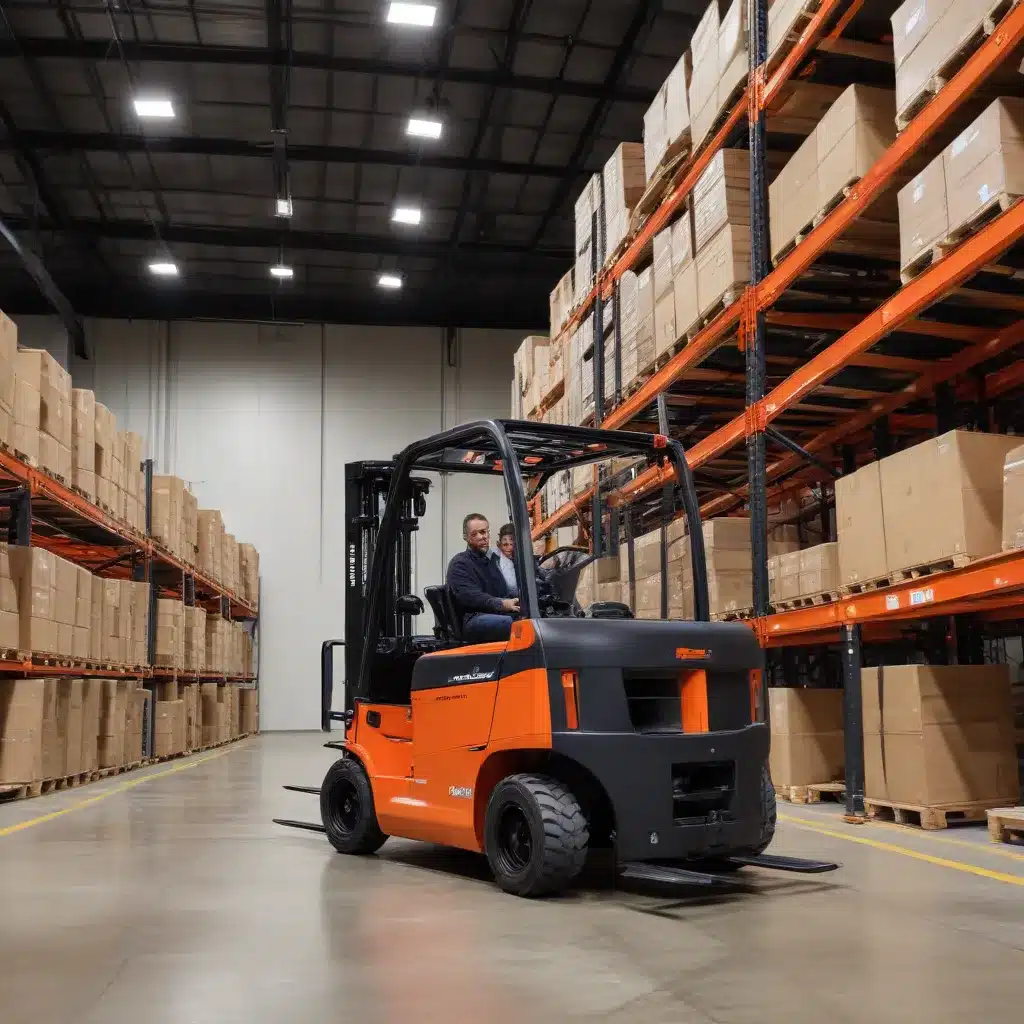
The Forklift Revolution: Embracing Sustainability and Efficiency
The industrial landscape is undergoing a transformative shift, and at the forefront of this change are the ubiquitous forklifts that power our warehouses and logistics operations. As the world moves towards a more sustainable future, the electrification of these material handling workhorses has emerged as a game-changing opportunity to drive unprecedented efficiency, cost savings, and environmental benefits.
Forklifts are ubiquitous in virtually every warehouse, distribution center, and manufacturing facility, with industry sources estimating that nearly 1.5 million units are sold globally every year. Historically, these workhorse vehicles have been powered by a mix of fossil fuel-powered engines, such as gasoline, diesel, and propane. However, the tide is turning as the same technological advancements that have propelled the electric vehicle (EV) revolution are now making electric forklifts all the more desirable and practical.
The Advantages of Warehouse Electrification
The benefits of transitioning to electric forklifts are multi-faceted, encompassing cost savings, sustainability, and operational efficiency.
Reduced Total Cost of Ownership
One of the primary drivers for warehouse electrification is the potential for significant cost savings over the lifetime of the forklift. Compared to their combustion engine counterparts, electric forklifts have a lower total cost of ownership (TCO). This is due to several factors:
- Fuel Savings: Electric forklifts do not require the purchase and ongoing refueling of fossil fuels, such as gasoline or propane. Instead, they rely on electricity, which is typically more cost-effective and stable in pricing.
- Maintenance Costs: Electric forklifts have fewer moving parts and require less maintenance than their internal combustion engine (ICE) counterparts. This translates to lower repair and servicing costs over the life of the vehicle.
- Battery Advancements: Advancements in lithium-ion battery technology have made electric forklifts more cost-effective, with improved energy density, faster charging times, and longer operating ranges.
Sustainability and Environmental Impact
The shift to electric forklifts has significant environmental benefits, aligning with the growing focus on sustainability and emissions reduction across industries.
- Zero Tailpipe Emissions: Electric forklifts produce zero direct emissions, eliminating the release of harmful pollutants and greenhouse gases associated with ICE forklifts. This results in cleaner air quality, particularly in indoor warehouse environments, and a healthier work environment for employees.
- Energy Efficiency: Electric forklifts are inherently more energy-efficient than their ICE counterparts, converting 65-70% of their energy input into useful work, compared to only 20% for ICE forklifts. This translates to significant energy savings and a reduced carbon footprint.
- Renewable Energy Integration: Electric forklifts can be seamlessly integrated with on-site renewable energy sources, such as solar or wind, further enhancing the sustainability of warehouse operations.
Operational Efficiency and Safety
The adoption of electric forklifts can also enhance operational efficiency and improve worker safety within warehouse environments.
- Quiet Operation: Electric forklifts operate with significantly less noise compared to their ICE counterparts, creating a more comfortable and productive work environment for employees.
- Improved Visibility: The absence of a bulky engine and fuel tank in electric forklifts can improve operator visibility, enhancing maneuverability and safety within the warehouse.
- Reduced Vibrations: Electric forklifts generate less vibration, which can contribute to reduced operator fatigue and improved ergonomics, leading to increased productivity and reduced risk of musculoskeletal injuries.
Overcoming Barriers to Adoption
While the benefits of electric forklifts are compelling, there are still some barriers to widespread adoption that need to be addressed.
Upfront Cost Considerations
One of the primary challenges is the higher upfront cost of electric forklifts compared to traditional ICE models. However, as mentioned earlier, the long-term cost savings associated with reduced fuel, maintenance, and operating expenses can often offset the initial investment.
To help bridge this gap, utility-sponsored market transformation programs and incentives have emerged as valuable tools to support warehouse operators in their transition to electric forklifts. These programs can effectively “buy down” the incremental cost, making the switch to electric a more financially viable option.
Charging Infrastructure Deployment
Establishing the necessary charging infrastructure within warehouses is another critical consideration. Warehouse operators must ensure they have the appropriate electrical capacity and distribution to support the seamless charging of their electric forklift fleets.
Fortunately, many large warehouses and industrial facilities already have the necessary electrical infrastructure in place, making the installation of charging equipment a more straightforward process. Collaboration with utility providers can also help streamline the deployment of charging solutions and unlock additional benefits, such as vehicle-to-grid (V2G) or vehicle-to-everything (V2X) applications.
Regulatory Challenges
The regulatory landscape surrounding the promotion of electric forklifts can present some challenges. Regulatory bodies may be hesitant to “pick winners and losers” when it comes to energy efficiency programs, as noted by industry expert Wes Whited of DNV. However, he emphasizes the need to think “outside the box” and find “backdoor ways to practically carry out decarbonization,” with the forklift representing an “easy arbitrage opportunity.”
Overcoming these regulatory hurdles will require innovative approaches, collaboration between industry stakeholders and policymakers, and a continued focus on the broader societal and environmental benefits of warehouse electrification.
The Path Forward: Embracing the Electric Forklift Revolution
As the world moves towards a more sustainable future, the electrification of forklifts stands as a pivotal opportunity to drive significant change within the warehouse and logistics industry. By embracing advanced electric forklifts, warehouse operators can unlock a myriad of benefits, from cost savings and environmental impact reduction to enhanced operational efficiency and worker safety.
The path forward is clear: the transition to electric forklifts is not only a practical choice but also a strategic one, aligning with the broader decarbonization efforts and sustainability goals that are shaping the future of the industrial landscape.
By leveraging the latest technological advancements, collaborating with utility providers, and navigating the regulatory landscape, warehouse operators can position themselves at the forefront of the electric forklift revolution, unlocking the full potential of this transformative technology.
To learn more about the latest forklift models, safety guidelines, and industry trends, be sure to visit Forklift Reviews – your trusted resource for all things material handling.

